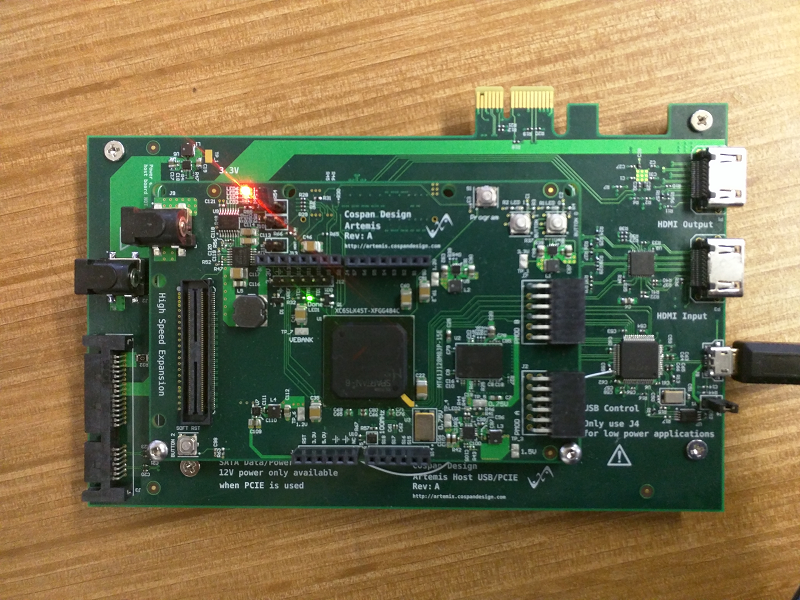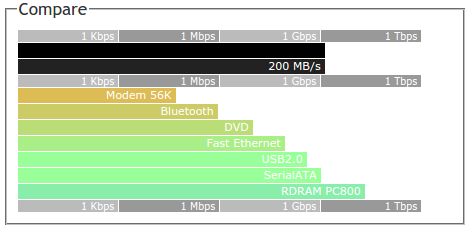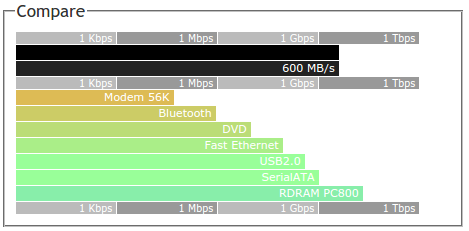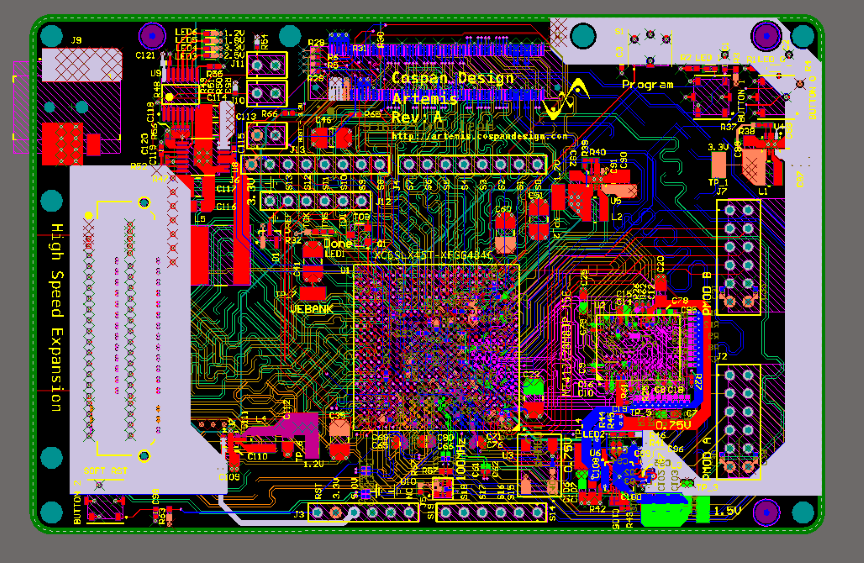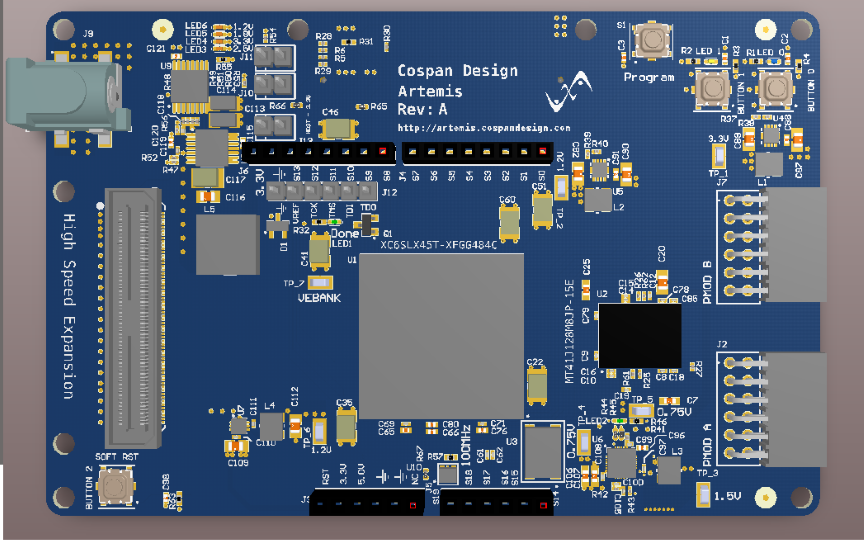-
SATA, DDR3, Verilog Visualizer and Other Stuff
08/02/2015 at 23:24 • 1 commentSATA Status
After weeks of painful debugging. I have been able to read and write to the hard drive!
I ran into an issue though... the speed at which I can communicate with my FPGA to/from my computer maxes out at about 16MBs and the hard drive reads/writes data at a rate of about 250MBs. There was no way I could stress test the system reading and writing data directly to the hard drive from my host computer!
![]()
I needed to verify that the SATA core can absorb and spit out an arbitrary large amount of data without errors...
I started out by creating a temporary pattern generator and validator within the SATA core to write a pattern to the hard drives. Turn around and read that pattern back, verifying that the written data is read back correctly. Some debugging cycles later everything worked!
But the end goal is to create a fast and useful way for users to store/load a large amount data generated or absorbed by their custom cores. It took a while to figure out how to create a test that exemplifies this but I think I got it. I combined the SATA, DDR3 and DMA cores for a test image. The host computer writes a 128MB test pattern (at a snails pace) into the DDR3. The DMA transfer data from the DDR3 to the hard drive and vice versa then the host can read the data out and compare it.
Here is a block diagram of the test
![]()
I generated the Nysa image. Here is how the Nysa GUI looks:
![]()
SO COOL! I've never had so many slaves on a Nysa image before! Each one of the blue modules above can control an actual core within the FPGA from the host computer. Users can interact with them through a simple Python interface.
Now that I had control of the DDR3 memory, DMA controller and SATA hard drive I devised a test that validates the system, here is what the script does:
- Clear the hard drive, the host fills the DDR3 with zeros and writes that data to the SATA hard drive.
- Write a test pattern, the host fills the DDR3 with a test pattern, then the DMA writes this pattern into the hard drive.
- Clear the DDR3, the host fills the DDR3 with zeros so any data read from hard drive can not be mistaken for old memory data.
- Read the contents of the hard drive into DDR3 memory.
- Read all the values out of the memory and verify that the values correspond to the original test pattern.
I understand the following is a little cryptic but this is the output. If something went wrong there would have been a lot of unfriendly messages telling me that numbers do not match, or worse the hard drive just hangs:
cospan@loki ~/Projects/nysa/test/hardware $ (master) ./test_dma_sata.py Important: Test:setUp: Found a nysa instance: FTYNUFY9 Important: NysaSDBManager:read_sdb: Parsing Top Interconnect Buffer Info: Test:setUp: Using Platform: artemis_usb2 Info: Test:setUp: Instantiated a SATA Device: /top/peripheral/sata Info: Test:setUp: Instantiated a DMA Device: /top/peripheral/dma Info: Test:test_dma_sata: Reseting Hard Drive... Info: Test:test_dma_sata: Reset Complete Important: Test:test_dma_sata: Linked up with Hard Drive! Info: Test:test_dma_sata: Initial Status of hard drive (Status): 0x50 Verbose: Test:test_dma_sata: Hard Drive Serial Number: 132481400420 Verbose: Test:test_dma_sata: Max User Sectors: 33570816 Verbose: Test:test_dma_sata: Max User Size (GB): 17.188258 SATA Status: 0x00000050 SATA Sector Count: 0x00000001 SATA Current Address: 0x00000000 Info: Test:test_dma_sata: Setup DMA Info: Test:test_dma_sata: Transfer Size: 0x00A00000 Verbose: Test:clear_memory: Clearing Memory Verbose: Test:clear_memory: Memory Size: 0x00000000 Verbose: Test:clear_memory: Memory Size: 0x08000000 is larger than read/write size Verbose: Test:clear_memory: Breaking transaction into 0x00800000 chunks Verbose: Test:clear_memory: Cleared: 0x00000000 - 0x00800000 Verbose: Test:clear_memory: Cleared: 0x00800000 - 0x01000000 Verbose: Test:clear_memory: Cleared: 0x01000000 - 0x01800000 Verbose: Test:clear_memory: Cleared: 0x01800000 - 0x02000000 Verbose: Test:clear_memory: Cleared: 0x02000000 - 0x02800000 Verbose: Test:clear_memory: Cleared: 0x02800000 - 0x03000000 Verbose: Test:clear_memory: Cleared: 0x03000000 - 0x03800000 Verbose: Test:clear_memory: Cleared: 0x03800000 - 0x04000000 Verbose: Test:clear_memory: Cleared: 0x04000000 - 0x04800000 Verbose: Test:clear_memory: Cleared: 0x04800000 - 0x05000000 Verbose: Test:clear_memory: Cleared: 0x05000000 - 0x05800000 Verbose: Test:clear_memory: Cleared: 0x05800000 - 0x06000000 Verbose: Test:clear_memory: Cleared: 0x06000000 - 0x06800000 Verbose: Test:clear_memory: Cleared: 0x06800000 - 0x07000000 Verbose: Test:clear_memory: Cleared: 0x07000000 - 0x07800000 Verbose: Test:clear_memory: Cleared: 0x07800000 - 0x08000000 Important: Test:test_dma_sata: Fill memory with zeros Important: Test:test_dma_sata: Configure DMA to transfer 41.943040 MB from DDR3 to Hard Drive Important: Test:test_dma_sata: Intiate a DMA Transaction Important: Test:test_dma_sata: DMA Transaction is complete Info: Test:test_dma_sata: Wait for transaction to finish Verbose: Test:test_dma_sata: Data from first sector of hard drive (Should be all zeros): array('B', [0, 0, 0, 0, 0, 0, 0, 0, 0, 0, 0, 0, 0, 0, 0, 0, 0, 0, 0, 0, 0, 0, 0, 0, 0, 0, 0, 0, 0, 0, 0, 0, 0, 0, 0, 0, 0, 0, 0, 0, 0, 0, 0, 0, 0, 0, 0, 0, 0, 0, 0, 0, 0, 0, 0, 0, 0, 0, 0, 0, 0, 0, 0, 0, 0, 0, 0, 0, 0, 0, 0, 0, 0, 0, 0, 0, 0, 0, 0, 0, 0, 0, 0, 0, 0, 0, 0, 0, 0, 0, 0, 0, 0, 0, 0, 0, 0, 0, 0, 0, 0, 0, 0, 0, 0, 0, 0, 0, 0, 0, 0, 0, 0, 0, 0, 0, 0, 0, 0, 0, 0, 0, 0, 0, 0, 0, 0, 0]) Important: Test:test_dma_sata: Fill memory with pattern Important: Test:test_dma_sata: Configure DMA to transfer 41.943040 MB from DDR3 to Hard Drive Verbose: Test:fill_memory_with_pattern: Memory Size: 0x08000000 is larger than write size Verbose: Test:fill_memory_with_pattern: Breaking transaction into 0x00800000 chunks Verbose: Test:fill_memory_with_pattern: Wrote: 0x00000000 - 0x00800000 Verbose: Test:fill_memory_with_pattern: Wrote: 0x00800000 - 0x01000000 Verbose: Test:fill_memory_with_pattern: Wrote: 0x01000000 - 0x01800000 Verbose: Test:fill_memory_with_pattern: Wrote: 0x01800000 - 0x02000000 Verbose: Test:fill_memory_with_pattern: Wrote: 0x02000000 - 0x02800000 Verbose: Test:fill_memory_with_pattern: Wrote: 0x02800000 - 0x03000000 Verbose: Test:fill_memory_with_pattern: Wrote: 0x03000000 - 0x03800000 Verbose: Test:fill_memory_with_pattern: Wrote: 0x03800000 - 0x04000000 Verbose: Test:fill_memory_with_pattern: Wrote: 0x04000000 - 0x04800000 Verbose: Test:fill_memory_with_pattern: Wrote: 0x04800000 - 0x05000000 Verbose: Test:fill_memory_with_pattern: Wrote: 0x05000000 - 0x05800000 Verbose: Test:fill_memory_with_pattern: Wrote: 0x05800000 - 0x06000000 Verbose: Test:fill_memory_with_pattern: Wrote: 0x06000000 - 0x06800000 Verbose: Test:fill_memory_with_pattern: Wrote: 0x06800000 - 0x07000000 Verbose: Test:fill_memory_with_pattern: Wrote: 0x07000000 - 0x07800000 Verbose: Test:fill_memory_with_pattern: Wrote: 0x07800000 - 0x08000000 Important: Test:test_dma_sata: Intiate a DMA Transaction Important: Test:test_dma_sata: DMA Transaction is complete Info: Test:test_dma_sata: Wait for transaction to finish . . . . . . . . . . . . . . . . . . . . . . . . . . . . . . . . . . . . . . . . . . . . . . . . . . . . . . . . . . . . . . . . . . . . . . . . . . . . . . . . . . . . . . . . . . . . . . . . . . . . . . . . . . . . . . . Info: Test:test_dma_sata: Transaction Finished! Current SATA DMA Address: 0x00A00000 SATA Status: 0x00000050 SATA Sector Count: 0x00004000 Verbose: Test:test_dma_sata: Data from first sector of the hard drive (Should be incrementing number patter): array('B', [0, 1, 2, 3, 4, 5, 6, 7, 8, 9, 10, 11, 12, 13, 14, 15, 16, 17, 18, 19, 20, 21, 22, 23, 24, 25, 26, 27, 28, 29, 30, 31, 32, 33, 34, 35, 36, 37, 38, 39, 40, 41, 42, 43, 44, 45, 46, 47, 48, 49, 50, 51, 52, 53, 54, 55, 56, 57, 58, 59, 60, 61, 62, 63, 64, 65, 66, 67, 68, 69, 70, 71, 72, 73, 74, 75, 76, 77, 78, 79, 80, 81, 82, 83, 84, 85, 86, 87, 88, 89, 90, 91, 92, 93, 94, 95, 96, 97, 98, 99, 100, 101, 102, 103, 104, 105, 106, 107, 108, 109, 110, 111, 112, 113, 114, 115, 116, 117, 118, 119, 120, 121, 122, 123, 124, 125, 126, 127]) Important: Test:test_dma_sata: Clear DDR3 Memory Verbose: Test:clear_memory: Clearing Memory Verbose: Test:clear_memory: Memory Size: 0x00000000 Verbose: Test:clear_memory: Memory Size: 0x08000000 is larger than read/write size Verbose: Test:clear_memory: Breaking transaction into 0x00800000 chunks Verbose: Test:clear_memory: Cleared: 0x00000000 - 0x00800000 Verbose: Test:clear_memory: Cleared: 0x00800000 - 0x01000000 Verbose: Test:clear_memory: Cleared: 0x01000000 - 0x01800000 Verbose: Test:clear_memory: Cleared: 0x01800000 - 0x02000000 Verbose: Test:clear_memory: Cleared: 0x02000000 - 0x02800000 Verbose: Test:clear_memory: Cleared: 0x02800000 - 0x03000000 Verbose: Test:clear_memory: Cleared: 0x03000000 - 0x03800000 Verbose: Test:clear_memory: Cleared: 0x03800000 - 0x04000000 Verbose: Test:clear_memory: Cleared: 0x04000000 - 0x04800000 Verbose: Test:clear_memory: Cleared: 0x04800000 - 0x05000000 Verbose: Test:clear_memory: Cleared: 0x05000000 - 0x05800000 Verbose: Test:clear_memory: Cleared: 0x05800000 - 0x06000000 Verbose: Test:clear_memory: Cleared: 0x06000000 - 0x06800000 Verbose: Test:clear_memory: Cleared: 0x06800000 - 0x07000000 Verbose: Test:clear_memory: Cleared: 0x07000000 - 0x07800000 Verbose: Test:clear_memory: Cleared: 0x07800000 - 0x08000000 Verbose: Test:test_dma_sata: Data read from memory after clear (Should be all zeros): array('B', [0, 0, 0, 0, 0, 0, 0, 0, 0, 0, 0, 0, 0, 0, 0, 0, 0, 0, 0, 0, 0, 0, 0, 0, 0, 0, 0, 0, 0, 0, 0, 0, 0, 0, 0, 0, 0, 0, 0, 0, 0, 0, 0, 0, 0, 0, 0, 0, 0, 0, 0, 0, 0, 0, 0, 0, 0, 0, 0, 0, 0, 0, 0, 0, 0, 0, 0, 0, 0, 0, 0, 0, 0, 0, 0, 0, 0, 0, 0, 0, 0, 0, 0, 0, 0, 0, 0, 0, 0, 0, 0, 0, 0, 0, 0, 0, 0, 0, 0, 0, 0, 0, 0, 0, 0, 0, 0, 0, 0, 0, 0, 0, 0, 0, 0, 0, 0, 0, 0, 0, 0, 0, 0, 0, 0, 0, 0, 0]) Important: Test:test_dma_sata: Configure DMA to transfer 41.943040 MB from Hard Drive to DDR3 Important: Test:test_dma_sata: Intiate a DMA Transaction Important: Test:test_dma_sata: DMA Transaction is complete Info: Test:test_dma_sata: Wait for transaction to finish (Timeout: 1) . . . . . . . . . . . . . . . . . . . . . . . . . . . . . . . . . . . . . . . . . . . . . . . . Info: Test:test_dma_sata: Transaction Finished! SATA Sector Count: 0x00004000 Important: Test:test_dma_sata: DMA Transaction is complete Important: Test:test_dma_sata: Verify values of DDR3 are correct Verbose: Test:test_dma_sata: Data read from memory after clear (Should be all incrementing number pattern): array('B', [0, 1, 2, 3, 4, 5, 6, 7, 8, 9, 10, 11, 12, 13, 14, 15, 16, 17, 18, 19, 20, 21, 22, 23, 24, 25, 26, 27, 28, 29, 30, 31, 32, 33, 34, 35, 36, 37, 38, 39, 40, 41, 42, 43, 44, 45, 46, 47, 48, 49, 50, 51, 52, 53, 54, 55, 56, 57, 58, 59, 60, 61, 62, 63, 64, 65, 66, 67, 68, 69, 70, 71, 72, 73, 74, 75, 76, 77, 78, 79, 80, 81, 82, 83, 84, 85, 86, 87, 88, 89, 90, 91, 92, 93, 94, 95, 96, 97, 98, 99, 100, 101, 102, 103, 104, 105, 106, 107, 108, 109, 110, 111, 112, 113, 114, 115, 116, 117, 118, 119, 120, 121, 122, 123, 124, 125, 126, 127]) Verbose: Test:test_dma_sata: Put Hard Drive to Sleep . ---------------------------------------------------------------------- Ran 1 test in 21.516s OKThrough the course of this blog entry I ran that test over an over tweaking the outputs to make it more readable (forgive the spelling errors) and I experienced no crashes! I think there are some hidden bugs in there somewhere but as it is right now the system is in pretty good shape.
My goal is that users can take advantage of very fast SATA hard drives to store and load data without spending most of their time developing the infrastructure to do so, the idea is something like this:
![]()
If you are interested in working with these cores, with or without Nysa, my github pages has all of these cores available for download, they don't need a Nysa image to work, they can be used with any Wishbone compliant bus:
I haven't made an entry on this project in a while because I've been working on documentation (SOO BORRING!) if you are interested here is what it looks like so far (still a work in progress)
Verilog Visualizer
I want to dedicate an entire blog post to this but I've also been working on a verilog visualizer that automatically scans your verilog cores you are working on and generates a module level visual flow chart showing the inter-dependency of modules. I hesitate to show this because it is still full of bugs but as they say "release early, release often"
Here is the block diagram of the I2C Wishbone Core, the top core is on the top left, while the dependencies trail off to the bottom right
![]()
I mostly did this because I wanted to see what the SATA core looks like:
![]()
Awesome! ... errr ... ignore the stuff at the top : /
Hardware Status
I just sent off a new version of Artemis (Rev B) that fixed some bugs in the design. Hopefully the next version will be in a sell-able state and people can use this design setup to interface with high speed sensors that was only available to companies with a lot of money.
Also I'm working on a new board called Nyx that uses the Intel Edison as a host so users can IOT their FPGAs to their hearts content.
When I get closer to sending Nyx out for fabrication I'll post some images.
-
FPGA Timing Post
06/10/2015 at 15:55 • 0 commentsI removed the previous post because I found there is better ways to solve the problem and I didn't want to lead anyone in the wrong direction (including my future self).
When I have a better understanding of the subject I'll re-post the entry.
Dave
-
SDB (Self Describing Bus)
05/31/2015 at 15:06 • 1 commentI started working on Nysa over three years ago. At the time I was working with a software guy who seemed to be allergic to FPGAs, he said that all of his experiences with them has been tedious, frustrating and required long conversations with the guy writing the FPGA code.
The problem was this: When you want to talk to an FPGA using some controller the controller and FPGA need to be designed in concert. If the designer adds GPIOs to the FPGA the controller needs to know about the GPIOs including their location and characteristics. How to solve this?
One method would be to document all the behaviors of the FPGA design and then use this document to design the software. This is obviously prone to errors, any late night changes to the FPGA code (HDL) and missed documentation would result in a communication break down. Another approach is to use something like USB Descriptors. If you are curious and you have a Linux box you can look at all the USB devices attached to your computer using:
cospan@yogurt:~$ lsusb Bus 001 Device 003: ID 0483:91d1 STMicroelectronics Bus 001 Device 002: ID 8087:8000 Intel Corp. Bus 001 Device 001: ID 1d6b:0002 Linux Foundation 2.0 root hub Bus 003 Device 001: ID 1d6b:0003 Linux Foundation 3.0 root hub Bus 002 Device 004: ID 0bda:5720 Realtek Semiconductor Corp. Bus 002 Device 003: ID 04f3:0296 Elan Microelectronics Corp. Bus 002 Device 002: ID 8087:07dc Intel Corp. Bus 002 Device 001: ID 1d6b:0002 Linux Foundation 2.0 root hubThen for more details into some device you can type (looking at the first device):
cospan@yogurt:~$ lsusb -d 0483:91d1 -v Bus 001 Device 003: ID 0483:91d1 STMicroelectronics Couldn't open device, some information will be missing Device Descriptor: bLength 18 bDescriptorType 1 bcdUSB 2.00 bDeviceClass 0 (Defined at Interface level) bDeviceSubClass 0 bDeviceProtocol 0 bMaxPacketSize0 64 idVendor 0x0483 STMicroelectronics idProduct 0x91d1 bcdDevice 0.28 iManufacturer 1 iProduct 2 iSerial 3 bNumConfigurations 1 Configuration Descriptor: bLength 9 bDescriptorType 2 wTotalLength 34 bNumInterfaces 1 bConfigurationValue 1 iConfiguration 0 bmAttributes 0xe0 Self Powered Remote Wakeup MaxPower 100mA Interface Descriptor: bLength 9 bDescriptorType 4 bInterfaceNumber 0 bAlternateSetting 0 bNumEndpoints 1 bInterfaceClass 3 Human Interface Device bInterfaceSubClass 0 No Subclass bInterfaceProtocol 0 None iInterface 0 HID Device Descriptor: bLength 9 bDescriptorType 33 bcdHID 1.10 bCountryCode 0 Not supported bNumDescriptors 1 bDescriptorType 34 Report wDescriptorLength 3177 Report Descriptors: ** UNAVAILABLE ** Endpoint Descriptor: bLength 7 bDescriptorType 5 bEndpointAddress 0x81 EP 1 IN bmAttributes 3 Transfer Type Interrupt Synch Type None Usage Type Data wMaxPacketSize 0x0040 1x 64 bytes bInterval 1Although it looks odd this gives all the information to the host computer to either use a built in driver like a mouse/keyboard controller or enough information to tell the user that it needs a custom driver, and who is the vendor that should provide that driver (STMicroelectronics in this case).
This is awesome and it would be great if it was easy to design an FPGA image that generated a descriptor such as this. I tried that a couple of years ago. It worked... ish, well it worked but it was lacking a lot of functionality. I called it the DRT or the Device ROM Table. The idea was the user specified a configuration file that would be used to program the FPGA and the script that generated the FPGA image would also generate this DRT at a known location within the FPGA. The controller would then read the DRT and know enough information to talk to the device. Essentially the FPGA itself was all the documentation required for the software developer.
The DRT worked out great for about a year and a half, it was limited in that it gave only the bare essentials of what was needed. I would add more features hesitantly knowing that I might one day paint myself into a corner. I had considered using the USB descriptor table but the amount of information within USB is very large, and to waste so much space within the FPGA on documentation seemed crazy.
In January I stumbled upon this site from CERN: Self Describing Bus. Apparently I wasn't the only one trying to solve this and these people did it, and did it very well. The SDB is great! It allows me to describe all the essential information I need while still being very compact. To give you a reference of what it looks like Here is a screenshot of the SDB Viewer from the nysa-gui reading and parsing the SDB within an Artems image:
![]()
On the left is the Raw ROM data read from the FPGA and on the right is the data parsed. It is only showing the name, address and size but there is more information within each element. For example the GPIO element called gpio1 contains the location of the GPIO device, the size of the module, a 'vendor' and 'product' id and even some class identifiers. I didn't want to use this view so I created another view:
Here is the same information shown visually:
![]()
I hope the Self Describing Bus becomes a standard in the future this way any controller can talk to any FPGA.
As for me the Self Describing Bus has enabled me to implement software to control different components on both Dionysus and Artemis. It is a lot more fun only writing high level drivers to control different aspects of the FPGA.
For reference how simple it is to talk to something like GPIOs in an interactive Python shell where I get a reference to a GPIO controller from the SDB in the form of a URN (Universal Resource Name) and turn the LED at address 0 on and off
cospan@loki ~ $ python Python 2.7.8 (default, Oct 20 2014, 15:05:19) [GCC 4.9.1] on linux2 Type "help", "copyright", "credits" or "license" for more information. >>> from nysa.host.platform_scanner import get_platforms_with_device >>> from nysa.host.driver.gpio import GPIO >>> from nysa.common import status >>> print "Get a reference to a status to print out messages" Get a reference to a status to print out messages >>> s = status.Status() >>> s.set_level("warning") >>> platform = get_platforms_with_device(GPIO, s)[0] >>> print "Using platform: %s" % platform.get_board_name() Using platform: Artemis >>> urn = platform.find_device(GPIO)[0] >>> print "A URN or Universal Resource Name is a unique name for the GPIO" A URN or Universal Resource Name is a unique name for the GPIO >>> print "URN: %s" % urn URN: /top/peripheral/gpio1 >>> gpio = GPIO(platform, urn) >>> gpio.set_port_direction(0xFFFFFFFF) >>> gpio.set_bit_value(0, 1) >>> gpio.get_bit_value(0) True >>> gpio.set_bit_value(0, 0) >>> gpio.get_bit_value(0) False -
Artemis Status and Gigabit Transceiver
05/28/2015 at 19:34 • 0 commentsArtemis is alive an well!
Artemis is working really well, most days I leave it attached to a Linux server at my office and remotely play with it when I get a chance. Work keeps me really busy so I can't dedicate too much time during the day but at night it's a different story.
Artemis uses a Spartan 6 LX45T instead of Dionysus's Spartan 6 LX9, the '45' and '9' in the name is a loose indication of the programming space available inside the FPGAs so Artemis gives me roughly 5X logic space. On top of that the DDR3 hardware and HDL has checked out and man is that DDR3 fast!
DDR3
Because the Xilinx coregen creates a DDR3 core that has multiple ports a system can be designed to use many individual memory interfaces instead of using an arbiter to arbitrate the memory resource (this is how Dionysus works). This got me thinking about employing the DDR3 memory in more applications. It sounds great but writing custom DDR3 controllers for each high throughput cores is a big deal. After thinking about it for a while I decided I should write a DMA controller that has a simple FIFO like interface this is trivial to implement in a custom core. This way instead of attaching cores directly to memory I can attach them to a DMA controller and let it route the data to/from the DDR3 as needed. The DDR3 is so fast it can absorb data at a higher rate than most of the peripherals can generate or absorb. So it makes sense to use it as a buffer.
I finished a version of the DMA Controller. It ended up having 4 input ports and 4 output ports, it can be configured using 8 instructions and it can bond channels, essentially behaving as a double buffer.
![DMA Controller FLow]()
SATA
I wrote a SATA hard drive controller a few years ago and I verified its functionality with a Virtex 6 FPGA. I posted the core on opencores nysa-sata. It works but it's difficult to use. I want to get the SATA controller to work on Artemis. I have a plan, it involves setting up the gigabit transceivers, configuring them to work with SATA and attaching the controller.
I've already started on this plan and it is progressing well:
Currently the GTP Transcievers seem to be alive. I wrote a small application that shows the transceivers are out of reset and the internal PLLs have locked on to the 150MHz SATA reference clocks and 100MHz PCIE reference clock. I am bringing the SATA core out of mothballs and adapting it to the wishbone bus. Last night I just finished the bare minimum port to wishbone so that I can make sure I can link up with the hard drive. Once this is finished I'll work on adapting the data interface to talk to the DMA controller.
Hardware Respin Required
Unfortunately, I found that a hardware respin is required of both Artemis and the host adapter board primarily because of connectors and I forgot to route a reset signal from the host control board to the main Artemis board. The new connectors will be more robust and the reset signal is trivial. Before I pull the trigger on an expensive fabrication and assembly I want to finish up the SATA checkout on this board. This will assure that I didn't make any mistakes while laying out the gigabit transceiver signals.
I'll post some pictures soon.
-
Artemis
04/08/2015 at 15:12 • 0 commentsArtemis!
![]() Artemis attached to the USB 2.0 and PCI Express Board
Artemis attached to the USB 2.0 and PCI Express Board![]()
FAB to Assembly
Artemis came from fab about two months ago. I had hoped I could assemble the entire board myself in order to save some money. The FPGA and DDR3 came pre-balled with ROHS (lead free) solder so I didn't need to put down any solder paste. So I put the FPGA and memory chip on the board and ran it through the reflow oven. It looked like it worked until I bumped the board and both chips fell off.
After a couple more attempts I asked my friend at MIT Media Lab to let me use the BGA rework station. We spent half a day there putting on FPGAs and memory chip. It looked like it worked so I went to ahead assembling the rest of the board. It was about 1 AM and I was nearly finished when I looked down at the board and noticed the DDR3 had slid sideways... the DDR3 didn't stick then either. I tentatively tested the FPGA and it was only attached by a couple of balls... GRRR!
I decided to bite the bullet and spend about $1,000 to get the boards assembled.
Smoke to Nysa
Finally it was time for the smoke test. Success! Artemis held onto it's smoke. All regulators were outputting the correct voltages. I moved on to testing the FPGA. I created a simple LED blink app to test out the FPGA, LEDs, buttons and 100MHz oscillator. Success! I attached the new host interface board and after about a week of modifying a controller I used to interface with Dionysus I was able to download my first Nysa image. It was about that time I realized that I made a mistake in the design of Artemis... NO RESET BUTTON! ARGGH! I had to add an external wire but the correct solution is to add a open drain reset signal will pull the pre-existing reset pin on the Artemis base low from the host computer. This is useful so that I don't have to physically reset the board all the time.
DDR3
Dionysus, the small board I used to test out Nysa, had a 16-bit 100MHz SDRAM chip as the memory source. To get an idea of what is possible with SDRAM I generated the following comparison charge using this great website: Forret Tools
![]()
The DDR3 is obviously faster, it has an 8-bit interface at a double data rate running at 300MHz, so it equates to 1 byte @ 600MHz or this new comparison:
![]()
I used the built in DDR3 memory core generator from Xilinx Coregen to create and interface with the memory, then wrote a wishbone wrapper around it and after about a week I verified that I could write to all 128MB and read it back correctly!
I did run into an issue that I wanted to mention. Xilnx Coregen generates Verilog source code that I am not legally allowed to distribute so I figured out a way to generate a NGC file that users can instantiate. Its the equivalent of distributing a binary version of a library.
What next
I realized that in order to take advantage of the DDR3 I needed to design a DMA controller that could pull data from something like a camera put it into DDR3 memory temporarily and then store it into the SATA hard drives or output it to HDMI. It has turned out to be a complicated core. Once this is finished I am planning to design a stereo CSI camera board to test it out.
-
Dionysus 0, Mario 1
01/01/2015 at 18:23 • 0 commentsI finally hit the limit of the little Dionysus and it came in form of the Nintendo Entertainment System.
Dionysus has 9K Luts. In the world of FPGAs that gets eaten pretty fast by the infrastructure of Nysa. Not to say you can't interface with LCDs, Cameras and Audio but when the design is more complicated like, say a NES, the MAP tool will barf
Slice Logic Utilization: Number of Slice Registers: 6,491 out of 11,440 56% Number used as Flip Flops: 6,474 Number used as Latches: 11 Number used as Latch-thrus: 0 Number used as AND/OR logics: 6 Number of Slice LUTs: 10,074 out of 5,720 176% (OVERMAPPED) Number used as logic: 10,028 out of 5,720 175% (OVERMAPPED) Number using O6 output only: 8,008 Number using O5 output only: 562 Number using O5 and O6: 1,458This has prompted me to move forward with Artemis. A devboard with a larger FPGA, DDR3 and a flexible interface for both communicating with the board and expanding its capabilities. Here is the current view of Artemis:
![]()
![]()
Along with all the connectors of Dionysus there is a high speed expansion that contains 50 Single ended, 25 Differential connectors as well as two SERDES Channel each capable of rates at about 3Gbps. I spent a long time debating whether to use this non-standard connector as opposed to the standard FMC connector but I have two reasons:
- The FMC Connector is $17.50 each!
- Hobbyist cannot make expansion boards without paying the prohibitively high prices for assembly. In order to get the FMC mating connector on an expansion board developers will need to pay for either assembly or some clever homebrew trick. With this you can possibly solder it by hand or use a heat gun to mount this. I hope this will help developers with less money to make some great projects.
I'm looking forward to implementing image pipelines and SDR based projects.
Nysa: FPGA Development Environment
Hardware and software to simplify FPGA development and interaction.
 Dave
Dave
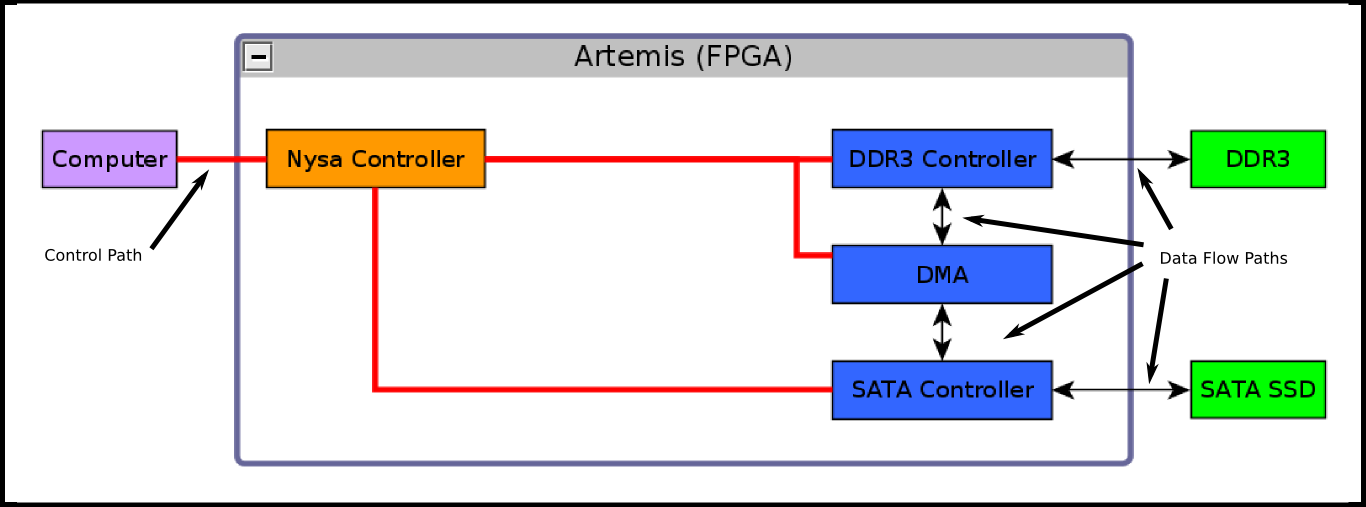
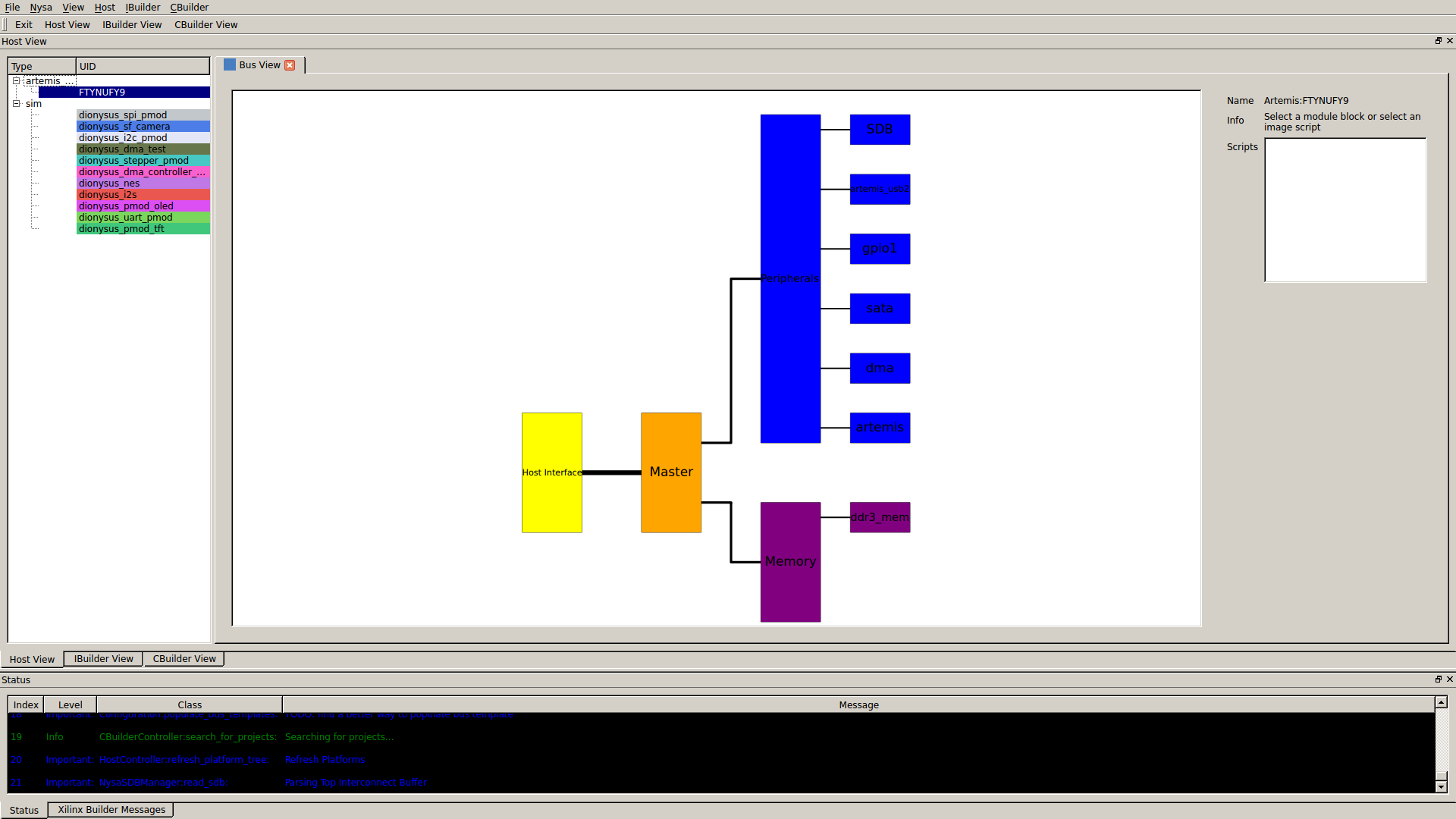
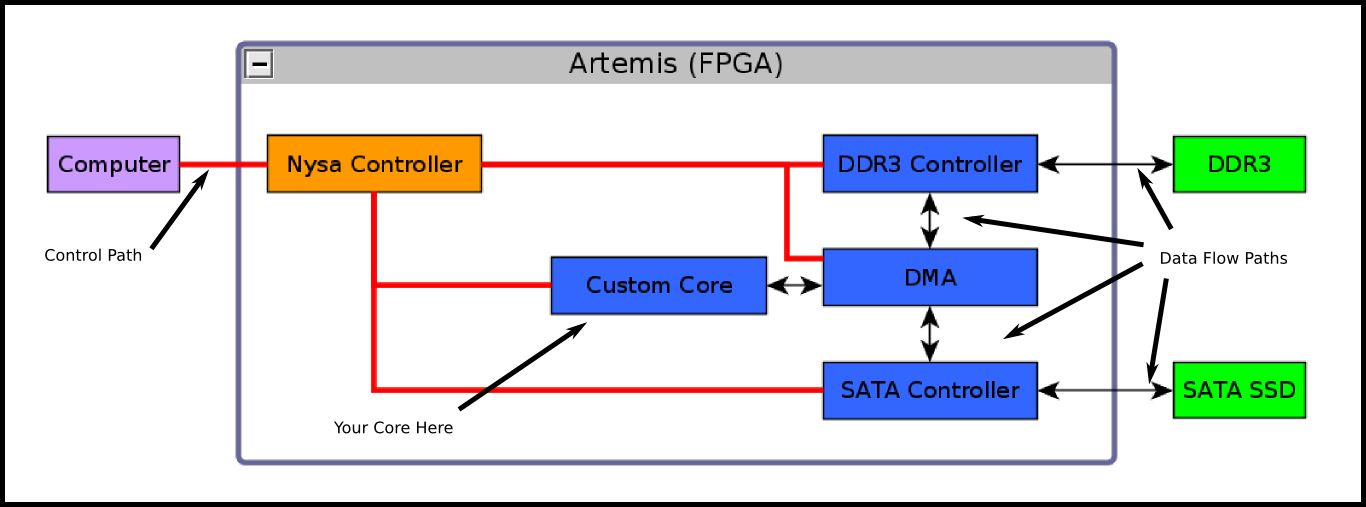
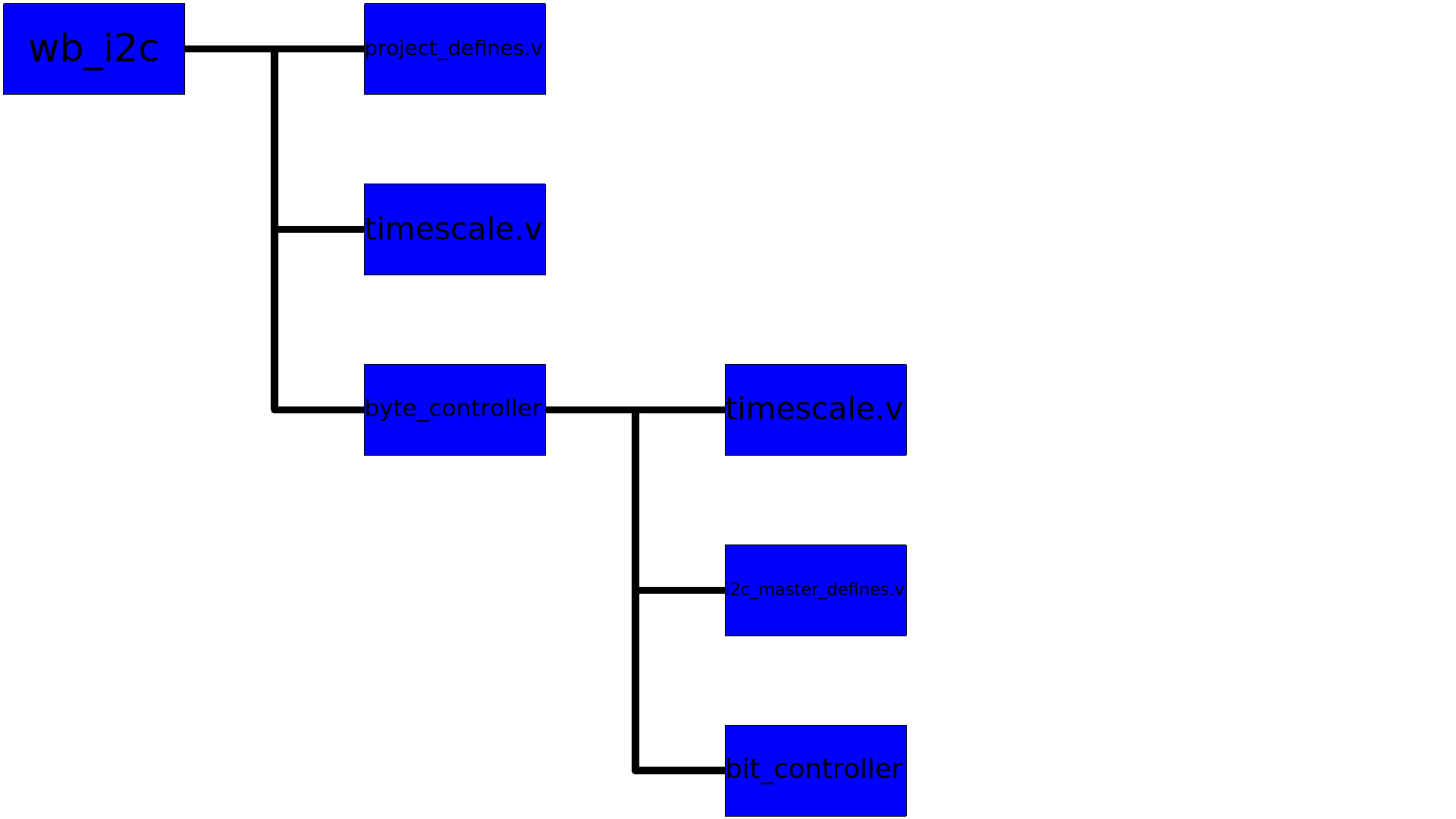
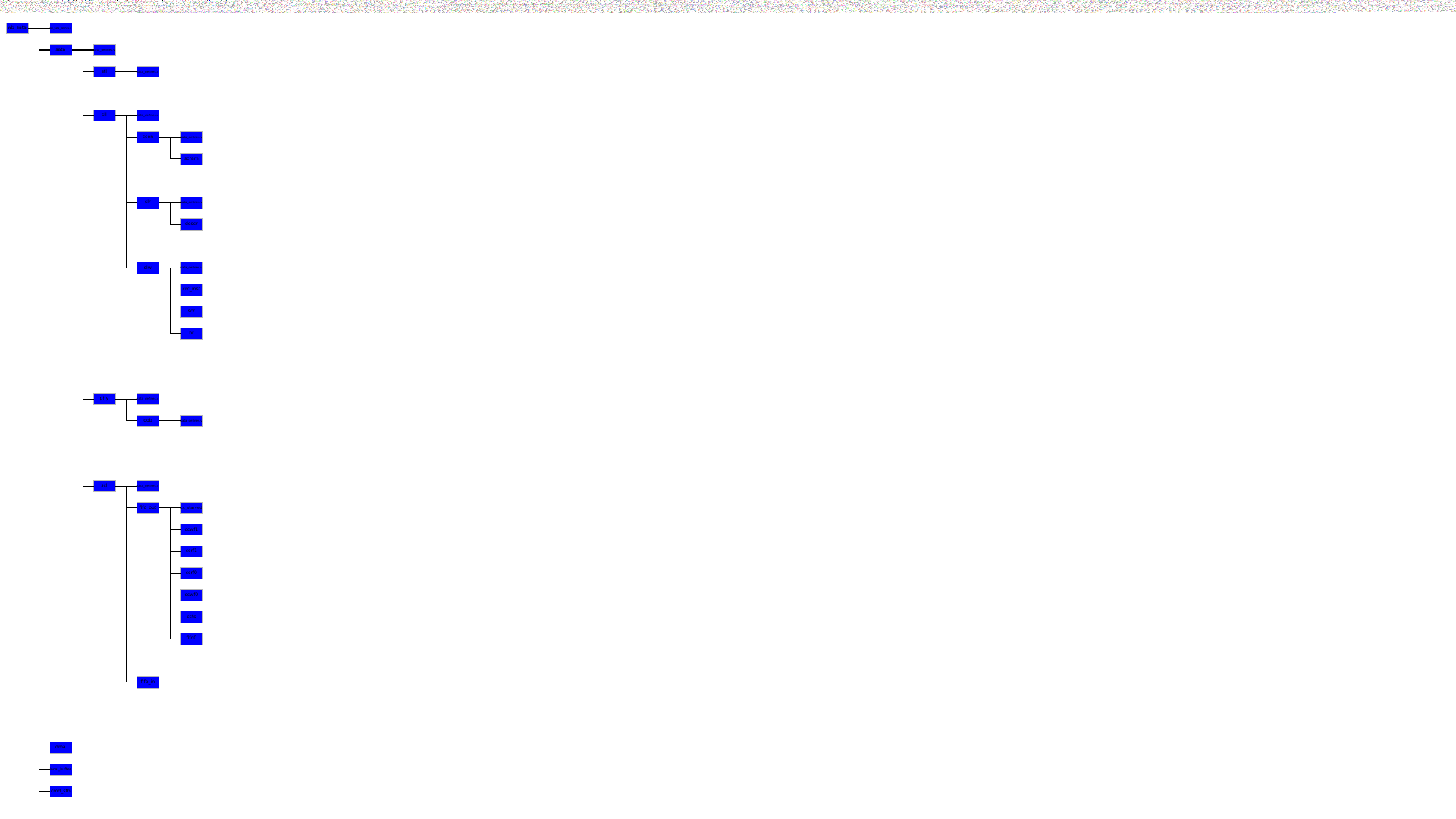
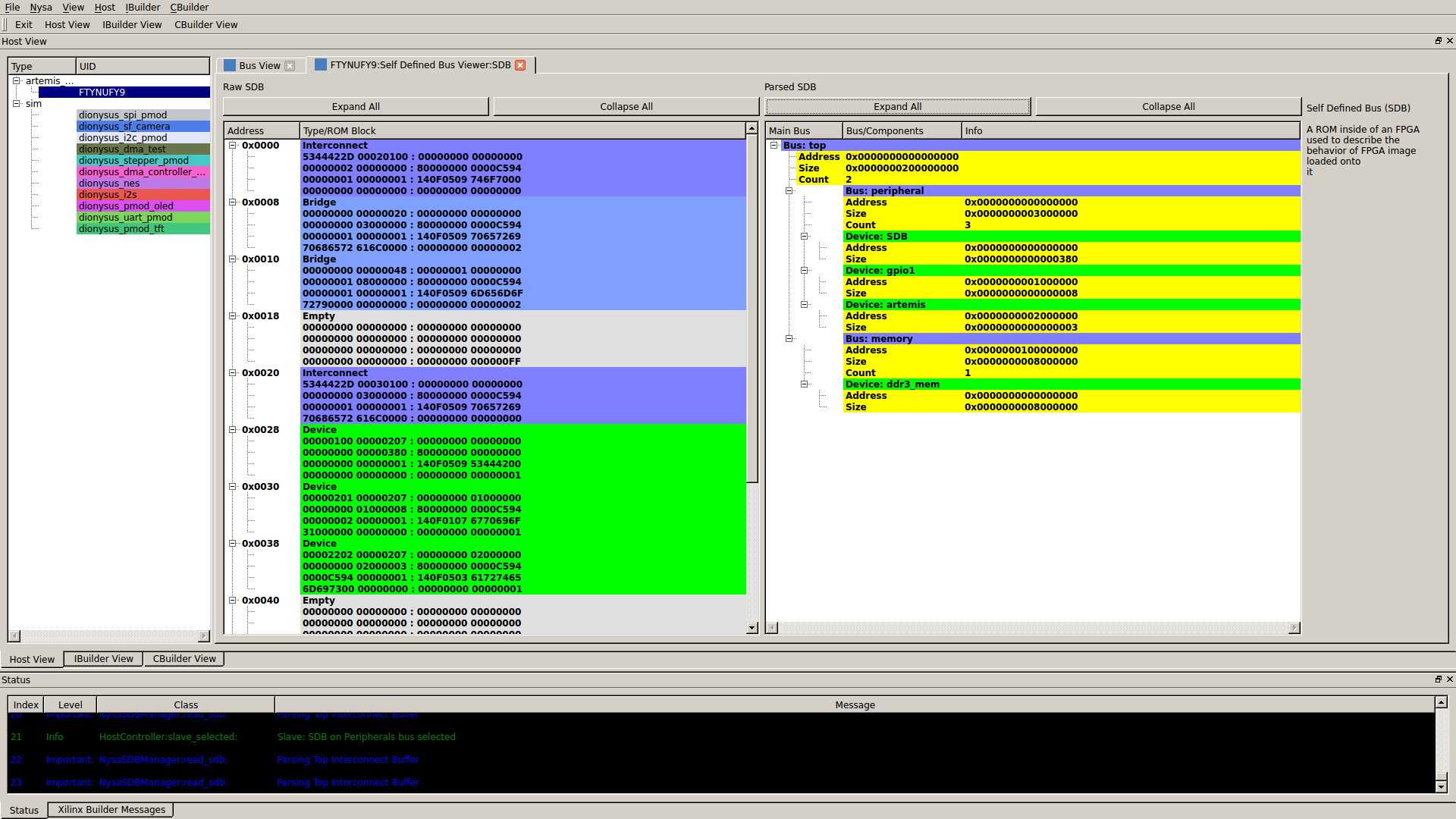
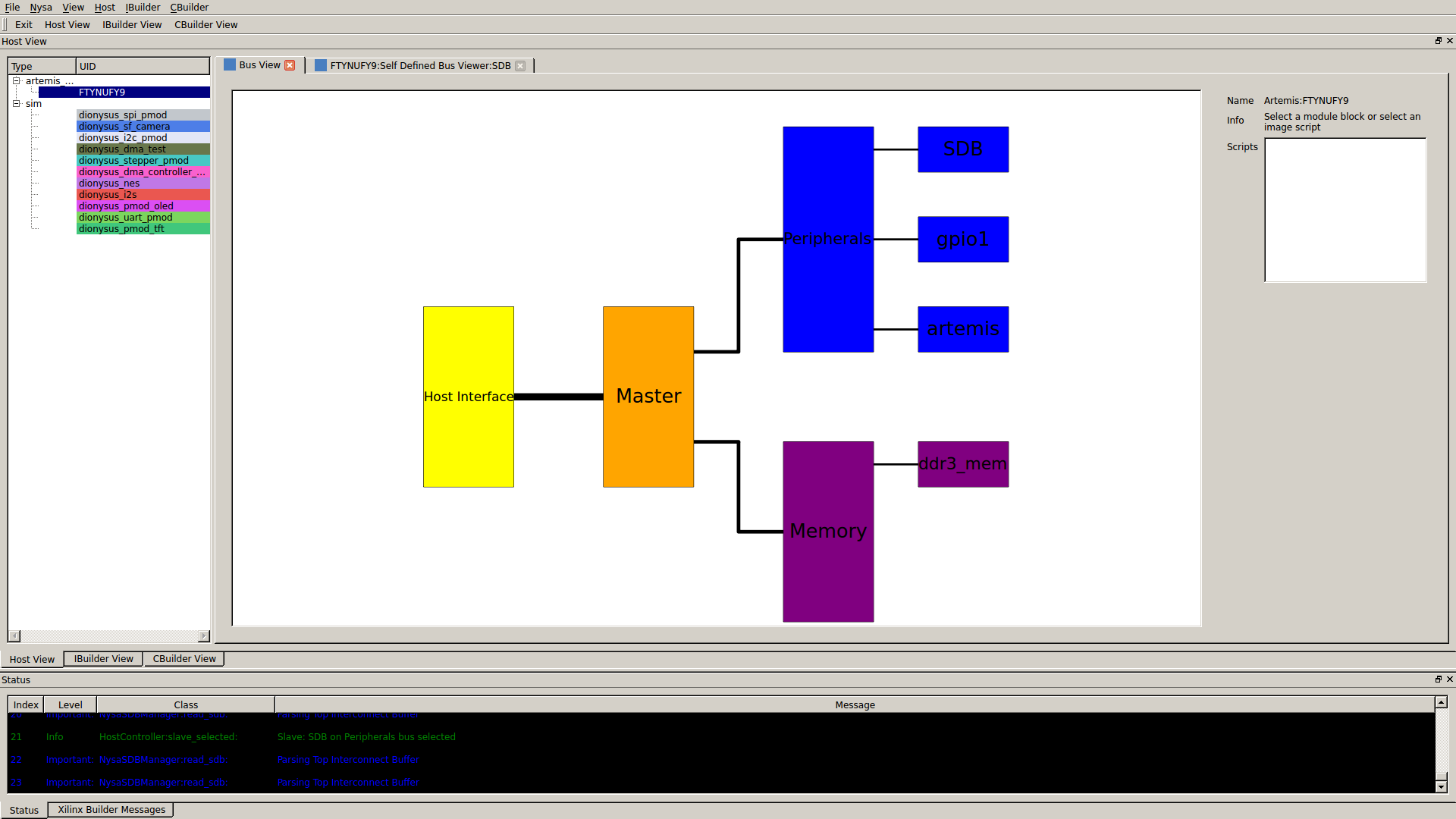

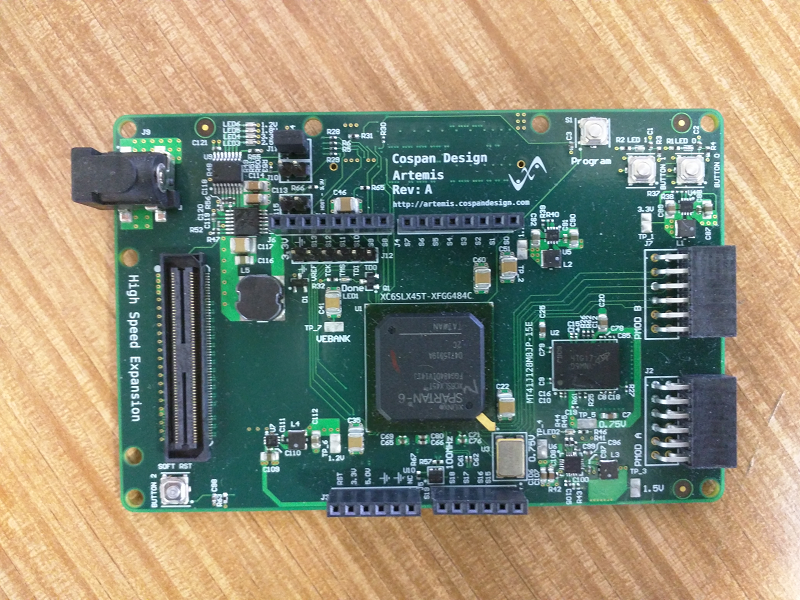 Artemis attached to the USB 2.0 and PCI Express Board
Artemis attached to the USB 2.0 and PCI Express Board